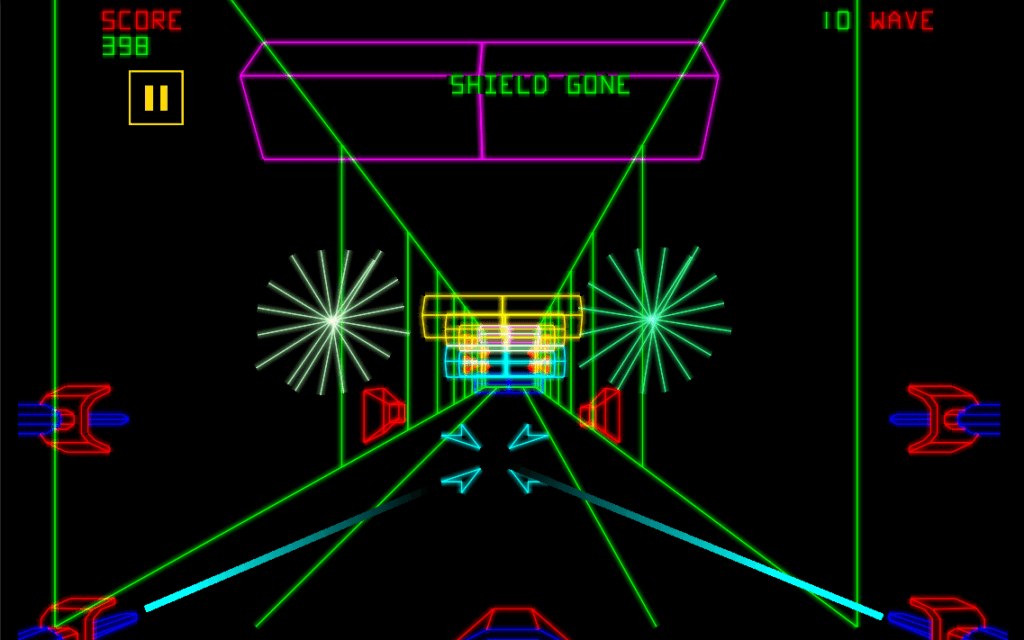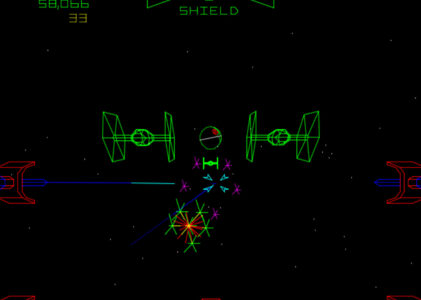May the Force be with you as we dive into the immersive world of Star Wars (1983), an iconic gaming masterpiece that has left an indelible mark on the gaming industry. Unveil the genre, platforms, gameplay, key features, strategies, reviews, and cultural impact, as well as its sequels and kindred gaming experiences.
In a galaxy not so far away, the year 1983 witnessed the birth of a gaming legend – Star Wars (1983). Developed by Atari, this arcade classic has enthralled generations of gamers with its gripping gameplay and timeless appeal. Join us as we embark on a journey to explore the deep space of Star Wars (1983), from its inception to its enduring legacy.

The Genre and Platforms
Star Wars (1983) is a quintessential example of a rail shooter arcade game, a genre that was gaining momentum in the early ’80s. Unlike traditional shooters where players control the movement of their character, in a rail shooter, the player’s perspective is fixed, and they can only control the targeting and firing of weapons. This genre perfectly suited the fast-paced, action-packed nature of the Star Wars universe.
The game was initially released as an arcade cabinet, which allowed players to step into the shoes of Luke Skywalker, piloting an X-wing starfighter against the forces of the evil Galactic Empire. The immersive arcade experience, complete with a yoke controller and vector graphics, made players feel like they were part of the Rebel Alliance’s struggle against the Imperial forces.
Gameplay: A Journey to a Galaxy Far, Far Away
At its core, Star Wars (1983) is a game of skill, reflexes, and precision. Players assume the role of Luke Skywalker as they embark on a mission to destroy the Death Star. The gameplay is divided into three distinct phases:
Phase 1: The Trench Run
The game begins with the iconic trench run sequence from the original Star Wars film. Players pilot an X-wing down the Death Star trench, dodging obstacles and blasting TIE fighters. The objective is to survive the trench run and advance to the next phase.
Phase 2: Surface Attack
In this phase, players descend to the surface of the Death Star, engaging in a ground assault. The objective is to destroy the surface cannons and avoid enemy fire.
Phase 3: The Exhaust Port
The final phase recreates the dramatic climax of the original film. Players must target and fire at the Death Star’s exhaust port to trigger a chain reaction and ultimately destroy the space station. However, time is limited, and players must act swiftly to succeed.
Key Gameplay Features
Star Wars (1983) boasted several key gameplay features that set it apart from other arcade games of its time:
- Vector Graphics: The game’s use of vector graphics was groundbreaking, providing sharp, high-contrast visuals that captured the essence of the Star Wars universe.
- Authentic Sound: The arcade cabinet featured authentic Star Wars sound effects and music, immersing players in the cinematic experience.
- Yoke Controller: The game’s unique controller resembled the control yoke of an X-wing, adding a tactile dimension to the gameplay and enhancing the feeling of piloting a starfighter.
- Skill-Based Scoring: Star Wars (1983) rewarded players based on their skill and accuracy, encouraging repeat playthroughs to achieve higher scores.
- Adaptive Difficulty: The game featured adaptive difficulty, adjusting the intensity of enemy attacks to the player’s skill level, ensuring a challenging experience for all.
Strategies and Cheats

Mastering Star Wars (1983) required a blend of skill and strategy. Here are some tips and tricks that seasoned players often employed:
- Practice Makes Perfect: Becoming proficient in the game’s controls and mechanics is essential. Regular practice helps improve accuracy in targeting enemy ships and obstacles.
- Use the Force (Wisely): Players had a limited number of torpedoes. It was crucial to use them strategically, primarily focusing on the final phase when targeting the Death Star’s exhaust port.
- Precision Aiming: Aiming precisely was the key to success. Hitting the small exhaust port required steady hands and sharp reflexes.
- Memorization: Given the fixed perspective of the game, memorizing the positions of obstacles and enemies in each phase was a common strategy to navigate more effectively.
As for cheats, while Star Wars (1983) didn’t have traditional cheat codes, some players discovered exploits and techniques to gain an advantage. These included exploiting the adaptive difficulty system by deliberately missing shots to make the game easier or targeting specific enemy types for higher point rewards.
Reviews and Cultural Impact
Star Wars (1983) received widespread acclaim upon its release. It was lauded for its stunning visuals, immersive audio, and faithful recreation of the Star Wars universe. Players and critics alike praised the game for its ability to make them feel like they were part of the epic battles from the films.
One of the game’s most significant cultural impacts was its role in popularizing the rail shooter genre. Star Wars (1983) set a high standard for arcade games, paving the way for future titles like “Star Fox” and “Panzer Dragoon.” It also contributed to the enduring popularity of the Star Wars franchise in the gaming world.

Over the years, Star Wars (1983) has become a beloved classic, often remembered as one of the greatest arcade games of all time. Its influence can still be seen in contemporary gaming, where developers continue to draw inspiration from its immersive and cinematic gameplay.
Sequels and Examples of Similar Games
The success of Star Wars (1983) led to the development of several sequels and spin-offs, each expanding on the core gameplay and incorporating elements from various Star Wars films. Some notable titles in the series include:
- Star Wars: The Empire Strikes Back (1985): This sequel allowed players to pilot a snowspeeder on the ice planet Hoth and engage in a battle against Imperial AT-AT walkers.
- Star Wars: Return of the Jedi (1984): Building on the success of its predecessors, this game featured sequences from the final film in the original trilogy, including the speeder bike chase on Endor and the confrontation with the Emperor.
- Star Wars Arcade (1993): Released for the Sega 32X, this 3D space combat game allowed players to pilot various Star Wars ships, including the iconic Millennium Falcon.
- Star Wars Trilogy Arcade (1998): This arcade game covered key sequences from the original trilogy, including the Battle of Yavin and the Battle of Endor, offering an updated and immersive experience.
Examples of Similar Games
While Star Wars (1983) remains a unique gem in the gaming world, several other titles have captured the spirit of the franchise and the rail shooter genre. Here are a few notable examples:
- Star Fox (1993): Known for its fast-paced space combat, Star Fox brought the rail shooter genre to the Super Nintendo and introduced players to the heroic Fox McCloud and his team of anthropomorphic animal pilots.
- Panzer Dragoon (1995): A critically acclaimed rail shooter series that blended sci-fi and fantasy elements, offering players the chance to ride dragon-like creatures and engage in epic battles.
- Sin and Punishment (2000): A Japanese cult classic, this rail shooter features fast-paced action, intense boss battles, and a unique blend of 3D movement within a 2D rail-shooting framework.
Star Wars
In conclusion, Star Wars (1983) stands as a timeless classic in the world of gaming. Its captivating gameplay, innovative features, and lasting cultural impact have secured its place in the annals of gaming history. As we celebrate this iconic title, we also recognize its influence on the gaming industry and its role in bringing the Star Wars universe to life for countless fans across the galaxy. So, whether you’re a Rebel pilot or an Imperial ace, the legacy of Star Wars (1983) continues to inspire gamers of all ages to embark on a galactic adventure like no other.













